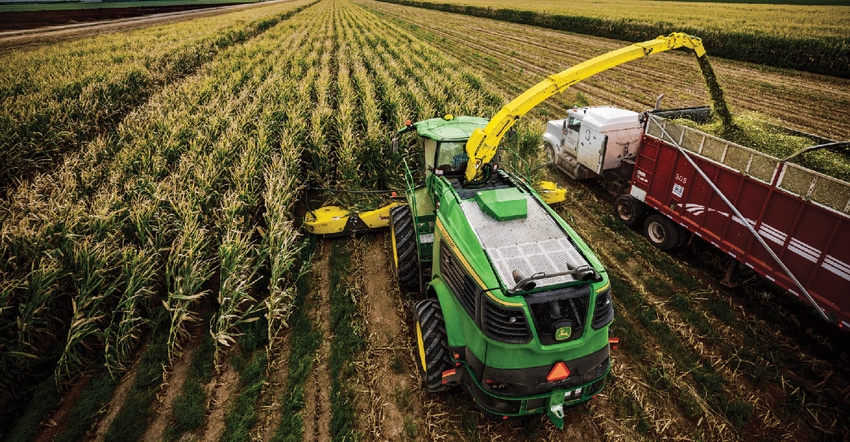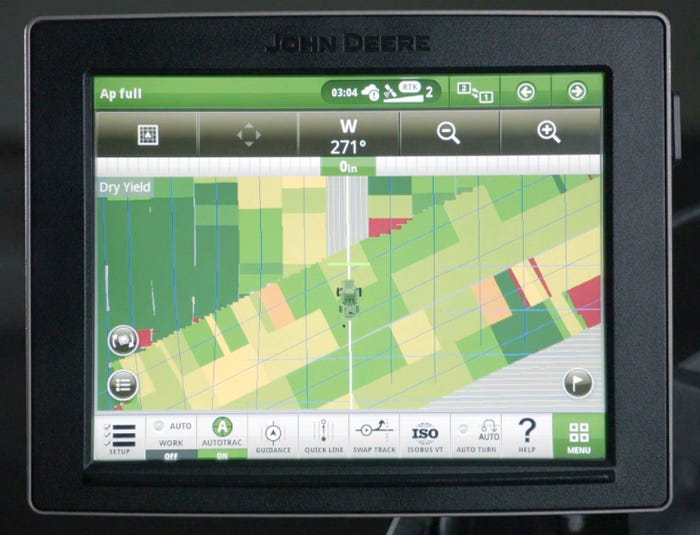November 24, 2020

Innovation in farm equipment was long built on better iron, but these days the software in use can make a significant difference in how you work. Two new tools from John Deere offer users a range of benefits. In addition, the company announced a purchase that adds potential new management insight for your business.
The first spring pass with a strip-till machine or planter becomes your road map in a field for the whole season. John Deere has taken that idea to a higher degree with AutoPath, which uses data from that first field pass to establish row guidance for all subsequent fieldwork.
“This system actually makes our customers’ lives easier,” says John Mishler, precision ag marketing manager for John Deere. “When a customer goes back into a field for those subsequent passes, we all know there’s a lot of counting of rows or looking for guess rows, and trying to find a spot to start.”
AutoPath solves that by managing each pass independent of implement size. Mishler explains that the initial pass, with a GPS receiver on the implement — strip till or planter — sets the framework for future work in the field. But the added precision of this new approach eliminates guess rows, and even makes it possible for farmers to mix up equipment. Say you have a 24-row planter but go to a 16-row combine head.
“AutoPath can work with that and avoid those ‘rows of shame’ left standing in the field,” Mishler says.
The system can also analyze a field and help determine the most efficient approach to planting, which makes spraying and harvest easier later, too. The system takes into account headlands and other field features to develop that “plan.” The farmer can decide how best to use that information, too.
Benefit of no guess rows
Mishler shared a story that capsulized how AutoPath can pay off. One test farmer in 2020 was in Iowa, where the derecho leveled his corn crop. “He was able to get into the field and let AutoPath guide the combine,” Mishler says. “The combine stayed on the rows even when the corn was laid over no more than 18 inches off the ground, and it was covering over two rows, at least.” He adds that the farmer using AutoPath says there was no way to manually harvest that grain, but the system knew where the rows were.
“He also told us if it weren’t for AutoPath, he would have been in that field with a disk rather than a combine,” Mishler adds. The AutoPath system is part of the John Deere Generation 4 Automation Bundle and is available for either the 4600 CommandCenter Integrated Display or the 4640 Universal Display. It is available for use on tractors, sprayers and combines.

EXPANDING SYNC: The updated Machine Sync system now makes harvest easier for more than corn and soybeans. From forage harvesting to onions, the system will link harvester and wagon or cart for easier operation.

Another innovation for 2021 is an updated, and more capable, Machine Sync system. It’s part of the new 20-3 software update for the Generation 4 4600 CommandCenter displays. Before the update, the system was used to sync combine and cart tractor for on-the-go unloading, which helped speed harvest operation.
The update adds more capabilities, including work with self-propelled forage harvesters and harvest of other direct-cut crops like potatoes or onions, when harvest equipment is pulled by a John Deere tractor and unloads directly into a commodity cart also pulled by a John Deere tractor.
“We’ve taken the opportunity now to expand harvest automation to a broader array of crops,” Mishler says. “We’re able to bring that automation to the forefront for some harvest operations that have had very little technology in the past.”
A software purchase
Along with those software upgrades, John Deere also made a purchase announcement. The company has bought Harvest Profit, a Fargo, N.D.-based firm with a system that can pull in a range of data to create forecasts and measure profitability on a field-by-field basis.
Lane Arthur, vice president, data, applications and analytics, explains that Deere made the purchase because customers were looking for an “entire solution around farm management. We have a variety of collaborations with other companies in order to help them, but at the end of the day we felt like there was a real need for an integrated view.”
That pile of data farmers capture every year has little value unless it can be pulled into a system that can analyze inputs purchased and used, yield on a field, and other applications. And in addition, match what you do in one year to profit from a following crop year.
Arthur says that Harvest Profit does not replace accounting software, and it will remain an independent company. “We'll treat Harvest Profit as a connected software company and a stand-alone product,” he says. “We have strong relationships with other companies, and we hope they continue to remain strong.”
He adds that farmers must opt in to share information with Harvest Profit, and it is already set up as one of the “tools” in the John Deere Operations Center menu. Going forward, Arthur sees opportunity in some new tools coming from Harvest Profit.
“They have an early version of a forecasting feature that says, ‘Hey, what if I do this?’ or ‘What if I do that?’ in my operation,” Arthur says. “We’ll look to build on that.” That feature is not yet available, but shows new ways farmers can apply data.
For more information about these tech innovations, visit johndeere.com.
About the Author(s)
You May Also Like






